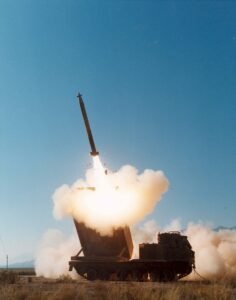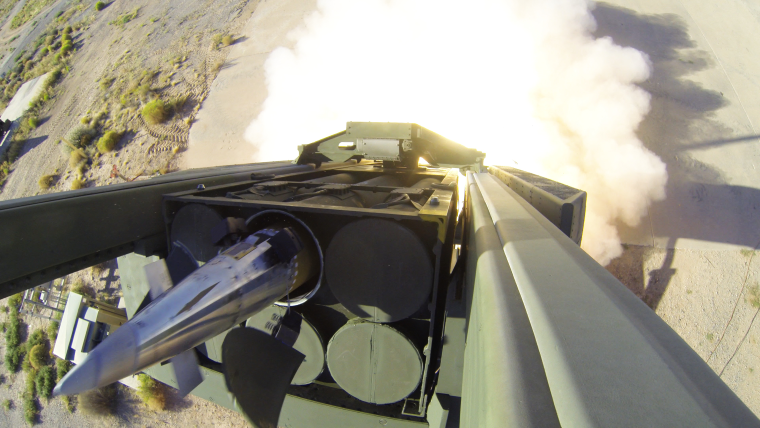The U.S. Army has committed over 4.7 billion dollars to contractor Lockheed Martin for delivery of the precision-guided version of its Multiple Launch Rocket System (MLRS). Designed to launch long-range, precision strikes against enemy targets, the MLRS family of rockets represents the cutting edge of guided weapons development for an ever-changing 21st-century battlefield.
Awarded on April 23rd, the contract calls for the delivery of “two full production lots” of the GMLRS rockets and their supporting equipment, according to a press release from Lockheed Martin.
“We are working closely with our Army customer and supply chain partners, who are moving with unprecedented speed, to ramp production capacity supporting the urgent need for this highly-reliable, combat-proven rocket,” said Jay Price, vice president of Precision Fires for Lockheed Martin Missiles and Fire Control in the same release.


The massive $4.79 billion commitment by the Army is the largest order for the weapons system to date and represents growing confidence in the advanced MLRS weapons platform.
According to the company, the guided version of the MLRS boasts a number of technological features that put it ahead of many competitive systems. For example, the system features a Global Positioning System (GPS) aided inertial guidance package as well as a set of small maneuvering canards on the rocket nose, which “combine to add maneuverability to enhance the accuracy of the system.”
The company also notes that “GMLRS is an all-weather rocket designed for fast deployment that delivers precision strike beyond the reach of most conventional weapons.”
The weapon system’s product site highlights a number of features of the guided version of the MLRS.
They include:
-
- Persistent, responsive, all-weather, rapidly deployable, long-range, surface-to-surface, precision-strike capability
- Fired from both the MLRS M270 family of launchers and the High Mobility Artillery Rocket System (HIMARS) launchers
- 6 Guided MLRS rockets per launch pod, with 2 pods carried by the M270 launchers and 1 pod carried by the HIMARS launchers
The GMLRS features a 200-pound unitary warhead option or a 200-pound alternative warhead (AW) version that utilizes a fragmented warhead. Lockheed Martin says that the GLMRS is accurate up to 70 kilometers but also notes that they have recently successfully tested an Extended-Range Guided MLRS rocket up to a range of over 150 kilometers “in all weather conditions.”
According to Lockheed Martin, the improved range is due to a larger motor and that the new versions “have enhanced maneuverability due to tail-driven control.”
“We’re seeing an increase in demand for this versatile rocket because GMLRS provides strategic advantage, unmatched accuracy, and it’s cost-effective,” said Price. “It’s the right round for many missions.”
To date, more than 40,000 Guided MLRS rockets have been produced, and those systems boast a reliability rating of over 98%. The new Army contact has a fulfillment date of 2026.
Christopher Plain is a Science Fiction and Fantasy novelist and Head Science Writer at The Debrief. Follow and connect with him on Twitter, learn about his books at plainfiction.com, or email him directly at christopher@thedebrief.org.

